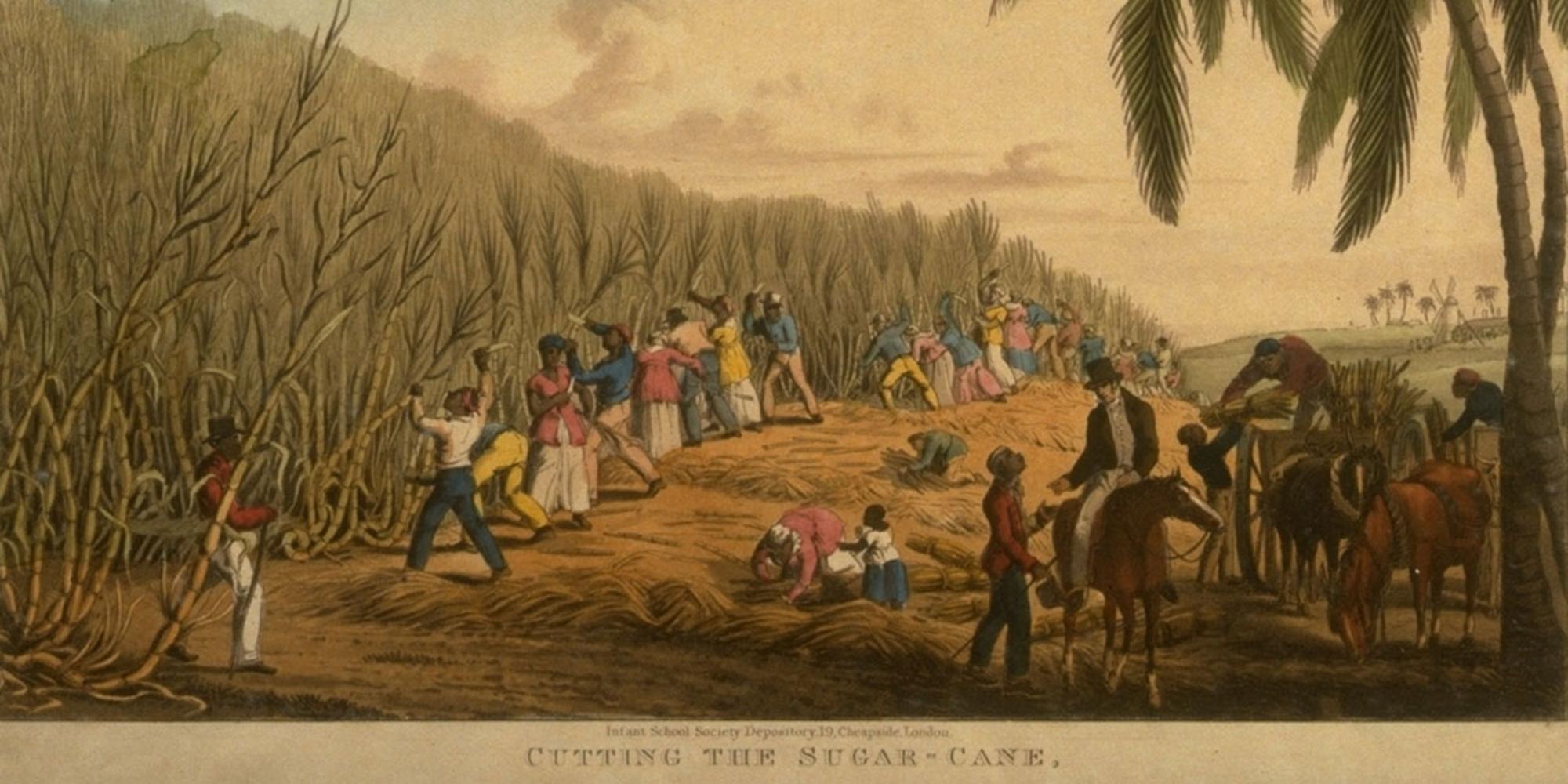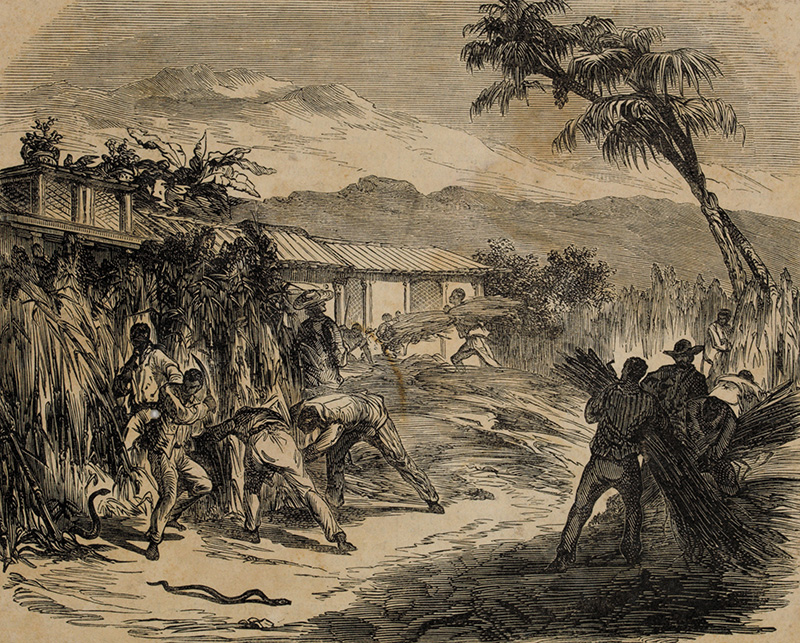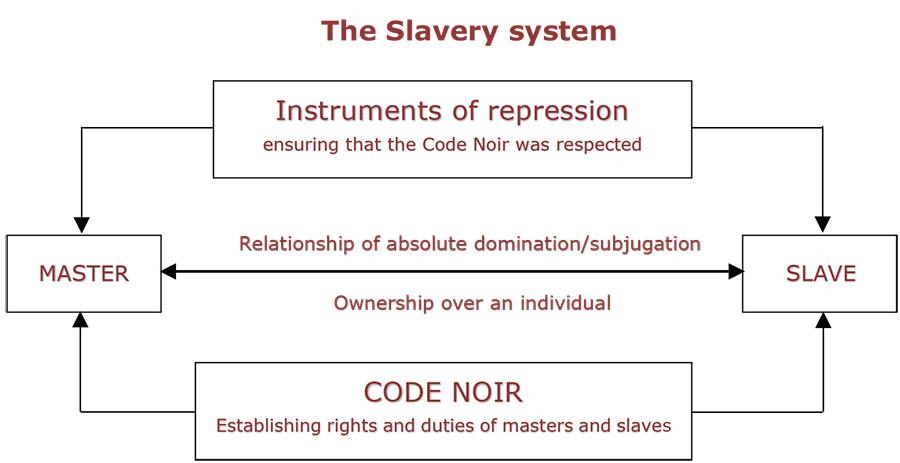Explain the Plantation System After the End of Slavery.
A system of convict leasing was developed to allow white slave plantation owners in the South to literally purchase prisoners to live on their property and work under their control. 6 What system replaced the old plantation system.

Slavery In The Caribbean National Museums Liverpool
âœI was shockâd at the first appearance of human flesh for sale.

. 10 What was. For a headman or driver slave owners received as much as 230 English pounds. Masters only gave light punishments and the system was based on give and take.
But surely God ordainâd âem for the use and benefit of us. 750000 people were freed. 3 How did the plantation system end.
February 6 2017 1039pm EST. While the task of operating the gin was far less painful the increased demand for slaves resulted in slavery raising from around 700000 slaves in the years before its invention to nearly double that in the next two decades. Plantation owners found they needed more slaves in the field to meet the increased ability of the gin.
Once the slaves became free laborers planters were forced for the first time to negotiate contracts with their former slaves. After emancipation a system of apprenticeship was established where emancipated slaves were required by the various. The plantation system started in Virginia and spread to New England with plantations growing labor-intensive crops like cotton rice sugar cane and tobacco initially powered by convicts that were shipped to the Americas by the British and then later by.
First we were a fledgling colony and so it took years to build up trade networks and plantation infrastructure. They also were used to pay local taxes and buy manufactured goods from England. Secondly the Royal African Company chartered in 1660 held a monopoly on the English slave trade until 1689 and then a virtual monopoly until 1698 when Parliament passed a law that opened the business to any English merchant.
Therefore slavery was maintained for racial and cultural reasons. According to most economic historians various economic factors were at play in the establishment of the system in the Americas- from transplanting and expanding the existing system of slave trade in Africa to avoid bearing the innovation cost of setting up a new system in Europe to the replacement of contractual indentured labour with slaves which would reduce. See Phillips The Decadence of the Plantation System in Annals of the Ameri-can Academy of Political and Social Science Philadelphia 1890- XXXV 1910 37.
7Since the plantation system was less dependent upon slavery than slavery was upon it as Ulrich B. The British government passed the Slavery Abolition Act in 1833 which emancipated all slaves in the British West Indies. Though the Revolution did not lead to abolition of slavery it set off a process of both immediate and gradual emancipation in northern states.
The American Revolution generated unprecedented debates about morality of slavery and its compatibility with the founding creeds of the new nation. 5 What happened to plantations after the Civil War. With relatively cheap labor increasing demand and a system of regulation the colonial plantation system was born.
Accustomed to absolute control over their labor force many sought to restore the old discipline only to meet determined opposition from the freedpeople who equated freedom with economic autonomy. But the dream of the freed slaves was to own their own land and work for themselves. Through this system bidders paid an average 25000 a year to the state in exchange for control over the lives of all of the prisoners.
The emancipation of the British West Indies refers to the abolition of slavery in Britains colonies in the West Indies during the 1830s. Exploiting black labor after the abolition of slavery. As John Pinney a plantation owner on the Caribbean island of Nevis wrote in a letter of the 1760s.
Sharecropping is a type of farming in which families rent small plots of land from a landowner in return for a portion of their crop to be given to. Otherwise his Divine Will would have been made manifest by some particular sign or tokenâ. 8 What destroyed the plantation.
As this contract system evolved in the years after the Civil War cotton planters abandoned the gang system. Criminal justice system is riven. The Civil War brought the Confederate States back into the Union but the people who lived in the South werent through fighting.
7 How did the New South differ from the South before the Civil War. How the end of slavery led to starvation and death for millions of black Americans This article is more than 9 years old In the brutal chaos. 9 When did the last plantation close.
Phillips observed it might be expected to survive the abolition of Negro bondage. Start studying 53 Slavery and the Plantation System. Convicts leased to harvest timber in Florida around 1915.
Slavery in America didnt end with the Emancipation ProclamationIt lived oneven after the Civil War had ended and the 13th Amendment had been put into place. What changed of course was the labor system upon which the plantation economy was based. If slaves wanted to they could work as wage earning employees on the plantations.
With the end of slavery the plantation owners in Guyana received very high compensation from the British Government for the loss of their slaves. The economic lives of planters former slaves and nonslaveholding whites were transformed after the Civil War. 4 Why did the plantation system take off in the South.
The plantation system was a system that divided land in the New World into smaller tracts known as plantations. For each slave they received an average of 52 English pounds which was the highest amount paid in any British colony. Planters found it hard to adjust to the end of slavery.
Parliament voted for complete emancipation freedom without apprenticeship to take effect from 1 August 1838. The Impact of the Revolution on Slavery. Plantation system provided decent living conditions for slaves who were looked after by their masters from births to deaths.
Tobacco profits helped to buy indentured servants and slaves. By the end of the 1600s the Virginia tobacco economy was thriving. Learn vocabulary terms and more with flashcards games and other study tools.

The Plantation Core Of The Social History Of Reunion Island Societe De Plantation Histoire Et Memoires De L Esclavage A La Reunion

The Economic Consequences Of The Abolition Of Slavery On Bourbon Island Societe De Plantation Histoire Et Memoires De L Esclavage A La Reunion

No comments for "Explain the Plantation System After the End of Slavery."
Post a Comment